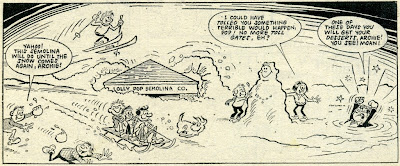welcome and enjoy!
Hi and welcome to my blog about comics from other people’s childhood! It is dedicated primarily to British humour comics of the 60s and 70s. The reason they are not from my childhood is simply because I didn’t live in the UK back then (nor do I live there now). I knew next to nothing about them until fairly recently but since then I’ve developed a strong liking for the medium and amassed a large collection, including a number of complete or near complete sets. My intention is to use this blog as a channel for sharing my humble knowledge about different titles, favourite characters and creators as I slowly research my collection.
QUICK TIP: this blog is a sequence of posts covering one particular comic at a time. The sequence follows a certain logic, so for maximum results it is recommended that the blog is read from the oldest post up.
Copyright of all images and quotations used here is with their respective owners. Any such copyrighted material is used exclusively for educational purposes and will be removed at first notice. All other text copyright Irmantas P.
Thursday, June 20, 2013
A LOOK AT SHIVER & SHAKE STRIPS: CHARLIE WILLIAMS
Saturday, April 20, 2013
A LOOK AT SHIVER & SHAKE STRIPS: LOLLY POP
The first inside pages of SHAKE section were reserved for Lolly Pop, a strip named after one of the two main characters – billionaire owner of countless factories and businesses of all kinds, forever anxious to make more ‘brass’. Pop was the perfect miser and penny-pincher as far as other people were concerned and he’d never spare a penny for the modest needs of his lad Archie. Judging by his own words, Pop had lived a rough childhood of deprivation and was reluctant to share his wealth with anyone, not even his son.
| Weekly
episodes usually followed the same basic pattern: Archie would ask Lolly Pop to
buy him something he desperately needed (like a pair of new shoes so that he
could go to a friend’s party because his old pair leaked) but skinflint Pop
would refuse, telling him that he’d never had the luxury when he was a lad.
Archie would then try to do without the goods or secretly help himself to tiny
bits of Pop’s wealth but would inevitably find himself in situations that resulted
in disproportionate damages to Pop. The damages could have been easily avoided,
had the meanie forked out at the very start. In the end Pop usually bought Archie
a lot more than he had initially asked for, in hope to avoid trouble in the future. |
Lolly Pop belonged to the category of class warfare strips that were so common in IPC comics of the 70s. The feature occupied the first two inside pages of SHAKE section (except in issues 53-56 when the regular order was upset by Frankie Stein Mini pull-out booklet and Lolly Pop suddenly found itself in SHIVER section towards the end of the paper), so presumably the editors had high expectations for the strip. They proved to be correct: Lolly Pop continued throughout the run of SHIVER AND SHAKE and migrated to the combined WHOOPEE! AND SHIVER & SHAKE where it appeared regularly until 1985 when WHOOPEE was absorbed by WHIZZER AND CHIPS which then became its third home, although I don’t know for how long.
















